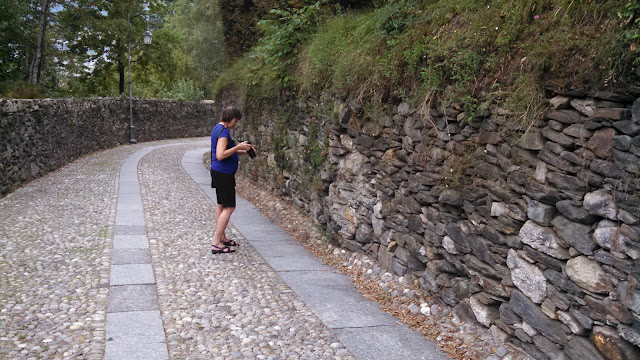I woke up this morning, rubbed the sleep from my eyes, and looked around at my familiar bedroom and out the window to my familiar street in my familiar home town. I had a dream last night. It was an amazing and incredible dream, so vivid that it still seems real. I dreamt that we had moved to a faraway land and we stayed there for a long time, long enough to experience all four seasons.
The streets were so narrow that cars could barely squeeze by each other, and so small cars were an advantage. I dreamt that we had a cute little car that was fun to drive, and it was called a “Panda”. We regularly loaded our bikes on the Panda and drove to a nearby town to ride through a long park along a big river.
I dreamt that all the local people spoke a beautiful and melodious language that we tried to learn, but did not get very far because most of them also spoke English better than we spoke their language. In trying to speak in the native tongue, we made some hilarious gaffes. The worst was the time I said, “I would like to shit telephones.”
And the local people loved to talk. It was common to see someone in the street having a conversation with another in a second-story window. Groups of women had the talent of all speaking at once while still getting what everyone else was saying. Old folks sat in piazzas and gossiped. In the evening, strolling around the piazza and chatting was the social event, with all generations represented.
I dreamt that the villages around us would have a street market on a different day of the week, where a street or piazza would be blocked off with vendors’ trucks, selling vegetables, meat, fish, plants, and clothes. We would always go to the one on Thursday and get extremely fresh vegetables and fruit. Then we would top off shopping with an espresso or cappuccino in a caffe bar.
In the land of my dreams, the seasons were more pronounced. I dreamt that it snowed once in the winter, and that we had to haul wood up to our apartment and heat it with a wood burning stove. It was hot in summer and we picked berries and cherries along the side of our road. In the fall, the persimmon tree in our garden dropped all of its leaves but was still covered with ripe persimmons so that it looked like it was decorated with bright orange Christmas ornaments. It would often get windy in the afternoon, and we had some tremendous rainstorms with thunder and lightning, but more often it was sunny with blue skies and white puffy clouds.
 |
| Hoopoe (photo by Rajiv Lather, www.birdforum.net) |
I dreamt that there were flowers everywhere, and they were Carmen’s favorite photography subject.
All of the old buildings had window and balcony planter boxes bursting with color. She was jealous of the giant hydrangeas that seemed to grow effortlessly there. Even weeds growing out of old stone walls became beautiful photo subjects.
And I dreamt we lived near a magical city, one famous as the center of the flowering of the arts in the Renaissance. We would take the train into the city, walk its ancient streets to spectacular churches and palaces, cross the river on a bridge lined with jewelry shops, see some of the most famous paintings and sculptures in the world, stop for coffee or gelato, or have dinner at a small trattoria on a tiny side street where the food was always wonderful.
It was just a dream. But it seemed so real!




















































